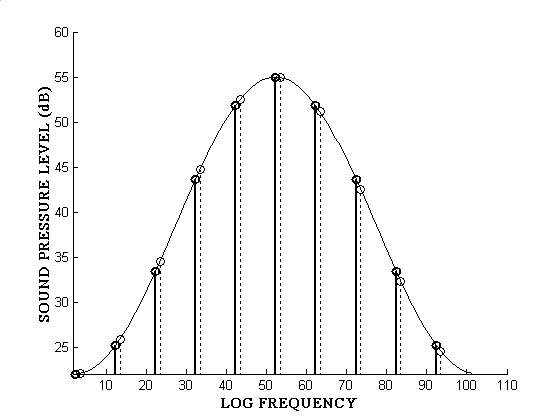|
As we have seen, pitched
notes are made up of many harmonic components, and it is possible to
change the amplitude of those components without affecting the pitch that
is perceived. In 1964, R. Shepard devised a sequence of notes which
continuously increased the perceived pitch without ever getting higher!
Shepard tones are interesting in the sense that they only contain the
octave components (or even multiples) of the frequency. Although our brain
hears the pitch, it doesn't know where to place the fundamental frequency;
this makes the tone ambiguous and this is why you hear an ever-ascending
scale.
We have shown this
subjective circularity in pitch judgement by generating a set of 12
complex tones sounded for 0.5 seconds and separated by a period of
silence lasting 0.24 seconds. Each tone consists of 10 simultaneously sounded sinusoidal
components spaced at octave intervals. The amplitudes of different
frequency components are distributed in frequency as shown on the graph
below. The bell-shaped curve forms a "spectral envelope".

Illusions arise when the spectral envelope is held constant and the
frequency components are increased or decreased in frequency. An increase in
pitch corresponds to an upward shift in the frequencies of all
components as shown by the the dotted lines on the graph. This raising in
pitch can be done in discrete steps as you can hear below:

This raising in pitch can also be done in a continuous
fashion, thus creating a glide. This paradoxical sound is known as a Risset
tone and can be heard below:

If you click on the blue buttons above, this should
launch the Windows Media
Player in a separate window.
|